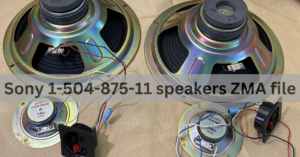Blisterata – Find Treatment!

Facing Blisterata was uncomfortable. Doing anything, even simple things, hurt a lot. Each blister felt like it was pulsating whenever I moved, showing me how important it is to take good care of my skin.
Blisterata is when your skin gets little bubbles filled with water. It happens because of rubbing, burns, allergies, or sickness. It can make your skin hurt and look weird.
In this article, we’ll talk about blisterata, a skin problem that makes you uncomfortable. We’ll look at what causes it, what it feels like, and how to make it better.
What is Blisterata?
Blisterata is when your skin gets bubbles filled with water. It makes your skin look different and can hurt a lot. When you have blisterata, your skin forms little pockets filled with fluid. These pockets are called blisters and they can pop up anywhere on your skin.
Sometimes they happen because your skin rubs against something too much, like shoes that don’t fit well. Other times, they can come from burns, allergies, or sicknesses. These blisters can make it hard to do things you normally do, and they might hurt or feel uncomfortable.
What Causes Blisterata?
Blisterata happens when things rub on your skin a lot or when your skin gets hurt. Here’s why it might happen:
- Friction: When something rubs on your skin too much, like tight shoes or rough fabric.
- Burns: Getting burned by something hot like fire or steam can cause blisters.
- Allergic Reactions: Your skin might react to something you’re allergic to, like certain foods or plants.
- Infections: Germs can get into cuts or breaks in your skin, causing blisters to form.
- Medical Conditions: Some sicknesses, like herpes or problems with your immune system, can also cause blisters to appear on your skin.
How does blisterata occur?

Blisterata happens when something keeps bothering your skin, like rubbing it too much, getting burned, or touching things you’re allergic to. When your skin gets annoyed, it tries to protect itself by making bubbles filled with liquid, called blisters. These blisters can show up anywhere on your skin and might hurt or feel uncomfortable.
Sometimes, Blisterata can form because of illnesses or problems with your body, like certain diseases or conditions that affect your immune system. When your body isn’t working right, it can make your skin more likely to get blisters. So, it’s important to be gentle with your skin and try to avoid things that might make it angry, like wearing tight shoes or using harsh chemicals.
Why Does Blisterata Happen – Take Control Over It!
Skin’s Protective Barrier:
Your skin has a special layer that acts like a shield, protecting it from harm. When this layer gets hurt or isn’t strong enough, fluid can collect under the skin, creating blisters. These Blisterata are like little bubbles filled with liquid
They can form when your skin’s protective layer isn’t working properly. So, when something damages or weakens this layer, Blisterata can appear as a way for your skin to try to heal and protect itself.
Damage:
When something hurts your skin, like when you rub it a lot or get burned, it can cause damage. This damage breaks the protective layer of your skin. When the protective layer is broken, it allows fluid to gather underneath, forming blisters. So, when your skin gets hurt, it can make blisters because the protective layer is damaged.
Irritation:
When your skin touches things that bother it, like strong chemicals or things you’re allergic to, it gets irritated. In response to this irritation, your skin might make blisters to protect itself. So, when your skin doesn’t like something and gets irritated, it can form blisters as a way to defend itself and stay safe.
Immune Response:
Your body has a defense system that helps keep you healthy. Sometimes, this defense system can overreact, like when it gets too worried about something. When it overreacts, it can cause Blisterata to appear on your skin as part of the reaction. So, when your body’s defense system gets too worked up, it can make blisters as a response.
Underlying Conditions:
Certain sicknesses, like autoimmune disorders, can make your skin more likely to get Blisterata because they affect how your body’s defenses work. Normally, your body’s defenses keep you safe from germs and other harmful things.
But with autoimmune disorders, these defenses get confused and start attacking your own body by mistake. This confusion can lead to blisters forming on your skin because your body isn’t working the way it should.
So, when you have certain medical conditions like autoimmune disorders, your skin might be more prone to getting blisters because of these problems with your body’s defenses.
How to Treat Blisterata – Get Relief!
Keep it Clean:
- When you have blisters, it’s important to keep the area clean to prevent infections. Use mild soap and water on your affected area and dry with a clean towel.
Don’t Pop Them:
- Although it might be tempting to pop blisters, it’s best to avoid doing so. Popping blisters can make infections more likely and slow down healing. Instead, cover the blisters with a clean and sterile bandage to protect them from further irritation.
Use Cold Stuff:
- Applying cold compresses to the blisters can help reduce pain and swelling. You can use a cold pack wrapped in a cloth or a clean towel and apply it to the affected area for about 15-20 minutes at a time, several times a day.
Try Creams:
- Over-the-counter creams or ointments containing soothing ingredients like aloe vera or hydrocortisone can help relieve discomfort and promote healing. Apply a thin layer of the cream to the blisters as directed on the product packaging.
Get Help if Needed:
- If the blisters are severe, show signs of infection (such as redness, warmth, or pus), or keep coming back despite home treatment, it’s important to seek medical attention. A healthcare professional can provide proper evaluation and treatment tailored to your specific condition.
How can prevent Blisterata?
- Make sure your shoes and clothes fit well. Tight or ill-fitting shoes and clothes can rub against your skin and cause blisters.
- When you’re using chemicals like cleaning products or gardening materials, wear gloves to protect your skin from irritation.
- Some activities, like gardening or sports, can rub or irritate your skin. Be mindful of this and take precautions, like wearing protective gear or using padding.
- Moisture can make your skin more prone to blisters, especially if it’s trapped against your skin. Keep your skin dry by wearing moisture-wicking fabrics and changing out of wet clothes promptly.
- Friction is a major cause of blisters. Try to minimize friction by wearing socks and shoes that fit well and using products like blister pads or powders to reduce rubbing.
- Sunburn can also lead to blisters. Protect your skin from excessive sun exposure by wearing sunscreen with a high SPF and covering up with clothing and hats when outdoors for long periods.
Frequently Asked Questions:
Can blisterata be treated at home?
Mild cases of blisterata can often be treated at home by keeping the affected area clean, avoiding popping blisters, applying cold compresses, using over-the-counter medications, and seeking medical attention if necessary.
What should I do if my blisterata doesn’t improve or gets worse?
If your blisterata is severe, infected, or recurrent, it’s important to consult a healthcare professional for proper evaluation and treatment.
Is blisterata contagious?
Blisterata itself is not contagious, but if blisters burst and release fluid, the fluid can contain viruses or bacteria that may be contagious.
Are there any long-term complications associated with blisterata?
In most cases, blisterata resolves without any long-term complications. However, recurrent or severe cases may lead to scarring or increased susceptibility to skin infections.
Conclusion:
Blisterata can be a painful and uncomfortable skin condition, often caused by factors like friction, burns, allergies, or underlying medical conditions. Understanding its causes and symptoms is crucial for effective management and treatment. By practicing proper skincare, seeking medical attention when needed, and taking preventive measures, individuals can reduce the risk of developing blisterata and promote faster healing.




